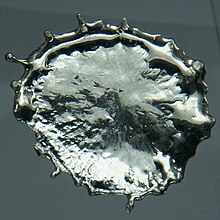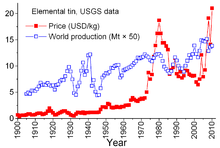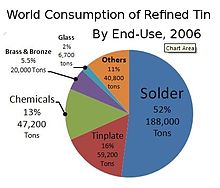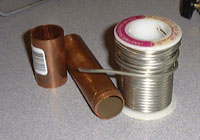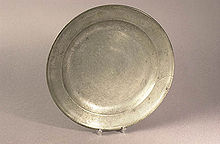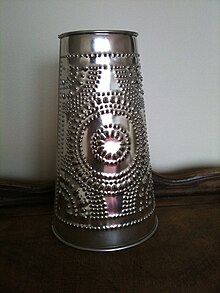From Wikipedia, the free encyclopedia

left: beta, β; right: alpha, α
|
|||||||||||||||||||||||||||||||||||||||||||||||||||||||||||||||||||||||||||||||||||||||||||||||||||||||||||||||||||||||||||||||||||||||||||||||||||||||||||||||||||||||||||||||||||||||||||||||||||||||||||||||||||||||||||||||||||||
| General properties | |||||||||||||||||||||||||||||||||||||||||||||||||||||||||||||||||||||||||||||||||||||||||||||||||||||||||||||||||||||||||||||||||||||||||||||||||||||||||||||||||||||||||||||||||||||||||||||||||||||||||||||||||||||||||||||||||||||
|---|---|---|---|---|---|---|---|---|---|---|---|---|---|---|---|---|---|---|---|---|---|---|---|---|---|---|---|---|---|---|---|---|---|---|---|---|---|---|---|---|---|---|---|---|---|---|---|---|---|---|---|---|---|---|---|---|---|---|---|---|---|---|---|---|---|---|---|---|---|---|---|---|---|---|---|---|---|---|---|---|---|---|---|---|---|---|---|---|---|---|---|---|---|---|---|---|---|---|---|---|---|---|---|---|---|---|---|---|---|---|---|---|---|---|---|---|---|---|---|---|---|---|---|---|---|---|---|---|---|---|---|---|---|---|---|---|---|---|---|---|---|---|---|---|---|---|---|---|---|---|---|---|---|---|---|---|---|---|---|---|---|---|---|---|---|---|---|---|---|---|---|---|---|---|---|---|---|---|---|---|---|---|---|---|---|---|---|---|---|---|---|---|---|---|---|---|---|---|---|---|---|---|---|---|---|---|---|---|---|---|---|---|---|---|---|---|---|---|---|---|---|---|---|---|---|---|---|---|---|
| Name, symbol | tin, Sn | ||||||||||||||||||||||||||||||||||||||||||||||||||||||||||||||||||||||||||||||||||||||||||||||||||||||||||||||||||||||||||||||||||||||||||||||||||||||||||||||||||||||||||||||||||||||||||||||||||||||||||||||||||||||||||||||||||||
| Pronunciation | /ˈtɪn/ TIN |
||||||||||||||||||||||||||||||||||||||||||||||||||||||||||||||||||||||||||||||||||||||||||||||||||||||||||||||||||||||||||||||||||||||||||||||||||||||||||||||||||||||||||||||||||||||||||||||||||||||||||||||||||||||||||||||||||||
| Allotropes | alpha, α (white); beta, β (gray) | ||||||||||||||||||||||||||||||||||||||||||||||||||||||||||||||||||||||||||||||||||||||||||||||||||||||||||||||||||||||||||||||||||||||||||||||||||||||||||||||||||||||||||||||||||||||||||||||||||||||||||||||||||||||||||||||||||||
| Appearance | silvery (beta, β) or gray (alpha, α) | ||||||||||||||||||||||||||||||||||||||||||||||||||||||||||||||||||||||||||||||||||||||||||||||||||||||||||||||||||||||||||||||||||||||||||||||||||||||||||||||||||||||||||||||||||||||||||||||||||||||||||||||||||||||||||||||||||||
| Tin in the periodic table | |||||||||||||||||||||||||||||||||||||||||||||||||||||||||||||||||||||||||||||||||||||||||||||||||||||||||||||||||||||||||||||||||||||||||||||||||||||||||||||||||||||||||||||||||||||||||||||||||||||||||||||||||||||||||||||||||||||
|
|||||||||||||||||||||||||||||||||||||||||||||||||||||||||||||||||||||||||||||||||||||||||||||||||||||||||||||||||||||||||||||||||||||||||||||||||||||||||||||||||||||||||||||||||||||||||||||||||||||||||||||||||||||||||||||||||||||
| Atomic number | 50 | ||||||||||||||||||||||||||||||||||||||||||||||||||||||||||||||||||||||||||||||||||||||||||||||||||||||||||||||||||||||||||||||||||||||||||||||||||||||||||||||||||||||||||||||||||||||||||||||||||||||||||||||||||||||||||||||||||||
| Standard atomic weight (±) | 118.710(7) | ||||||||||||||||||||||||||||||||||||||||||||||||||||||||||||||||||||||||||||||||||||||||||||||||||||||||||||||||||||||||||||||||||||||||||||||||||||||||||||||||||||||||||||||||||||||||||||||||||||||||||||||||||||||||||||||||||||
| Element category | post-transition metal | ||||||||||||||||||||||||||||||||||||||||||||||||||||||||||||||||||||||||||||||||||||||||||||||||||||||||||||||||||||||||||||||||||||||||||||||||||||||||||||||||||||||||||||||||||||||||||||||||||||||||||||||||||||||||||||||||||||
| Group, block | group 14 (carbon group), p-block | ||||||||||||||||||||||||||||||||||||||||||||||||||||||||||||||||||||||||||||||||||||||||||||||||||||||||||||||||||||||||||||||||||||||||||||||||||||||||||||||||||||||||||||||||||||||||||||||||||||||||||||||||||||||||||||||||||||
| Period | period 5 | ||||||||||||||||||||||||||||||||||||||||||||||||||||||||||||||||||||||||||||||||||||||||||||||||||||||||||||||||||||||||||||||||||||||||||||||||||||||||||||||||||||||||||||||||||||||||||||||||||||||||||||||||||||||||||||||||||||
| Electron configuration | [Kr] 4d10 5s2 5p2 | ||||||||||||||||||||||||||||||||||||||||||||||||||||||||||||||||||||||||||||||||||||||||||||||||||||||||||||||||||||||||||||||||||||||||||||||||||||||||||||||||||||||||||||||||||||||||||||||||||||||||||||||||||||||||||||||||||||
| per shell | 2, 8, 18, 18, 4 | ||||||||||||||||||||||||||||||||||||||||||||||||||||||||||||||||||||||||||||||||||||||||||||||||||||||||||||||||||||||||||||||||||||||||||||||||||||||||||||||||||||||||||||||||||||||||||||||||||||||||||||||||||||||||||||||||||||
| Physical properties | |||||||||||||||||||||||||||||||||||||||||||||||||||||||||||||||||||||||||||||||||||||||||||||||||||||||||||||||||||||||||||||||||||||||||||||||||||||||||||||||||||||||||||||||||||||||||||||||||||||||||||||||||||||||||||||||||||||
| Phase | solid | ||||||||||||||||||||||||||||||||||||||||||||||||||||||||||||||||||||||||||||||||||||||||||||||||||||||||||||||||||||||||||||||||||||||||||||||||||||||||||||||||||||||||||||||||||||||||||||||||||||||||||||||||||||||||||||||||||||
| Melting point | 505.08 K (231.93 °C, 449.47 °F) | ||||||||||||||||||||||||||||||||||||||||||||||||||||||||||||||||||||||||||||||||||||||||||||||||||||||||||||||||||||||||||||||||||||||||||||||||||||||||||||||||||||||||||||||||||||||||||||||||||||||||||||||||||||||||||||||||||||
| Boiling point | 2875 K (2602 °C, 4716 °F) | ||||||||||||||||||||||||||||||||||||||||||||||||||||||||||||||||||||||||||||||||||||||||||||||||||||||||||||||||||||||||||||||||||||||||||||||||||||||||||||||||||||||||||||||||||||||||||||||||||||||||||||||||||||||||||||||||||||
| Density near r.t. | white, β: 7.365 g·cm−3 gray, α: 5.769 g·cm−3 |
||||||||||||||||||||||||||||||||||||||||||||||||||||||||||||||||||||||||||||||||||||||||||||||||||||||||||||||||||||||||||||||||||||||||||||||||||||||||||||||||||||||||||||||||||||||||||||||||||||||||||||||||||||||||||||||||||||
| when liquid, at m.p. | 6.99 g·cm−3 | ||||||||||||||||||||||||||||||||||||||||||||||||||||||||||||||||||||||||||||||||||||||||||||||||||||||||||||||||||||||||||||||||||||||||||||||||||||||||||||||||||||||||||||||||||||||||||||||||||||||||||||||||||||||||||||||||||||
| Heat of fusion | white, β: 7.03 kJ·mol−1 | ||||||||||||||||||||||||||||||||||||||||||||||||||||||||||||||||||||||||||||||||||||||||||||||||||||||||||||||||||||||||||||||||||||||||||||||||||||||||||||||||||||||||||||||||||||||||||||||||||||||||||||||||||||||||||||||||||||
| Heat of vaporization | white, β: 296.1 kJ·mol−1 | ||||||||||||||||||||||||||||||||||||||||||||||||||||||||||||||||||||||||||||||||||||||||||||||||||||||||||||||||||||||||||||||||||||||||||||||||||||||||||||||||||||||||||||||||||||||||||||||||||||||||||||||||||||||||||||||||||||
| Molar heat capacity | white, β: 27.112 J·mol−1·K−1 | ||||||||||||||||||||||||||||||||||||||||||||||||||||||||||||||||||||||||||||||||||||||||||||||||||||||||||||||||||||||||||||||||||||||||||||||||||||||||||||||||||||||||||||||||||||||||||||||||||||||||||||||||||||||||||||||||||||
vapor pressure
|
|||||||||||||||||||||||||||||||||||||||||||||||||||||||||||||||||||||||||||||||||||||||||||||||||||||||||||||||||||||||||||||||||||||||||||||||||||||||||||||||||||||||||||||||||||||||||||||||||||||||||||||||||||||||||||||||||||||
| Atomic properties | |||||||||||||||||||||||||||||||||||||||||||||||||||||||||||||||||||||||||||||||||||||||||||||||||||||||||||||||||||||||||||||||||||||||||||||||||||||||||||||||||||||||||||||||||||||||||||||||||||||||||||||||||||||||||||||||||||||
| Oxidation states | 4, 3,[1] 2, 1,[2] −4 (an amphoteric oxide) | ||||||||||||||||||||||||||||||||||||||||||||||||||||||||||||||||||||||||||||||||||||||||||||||||||||||||||||||||||||||||||||||||||||||||||||||||||||||||||||||||||||||||||||||||||||||||||||||||||||||||||||||||||||||||||||||||||||
| Electronegativity | Pauling scale: 1.96 | ||||||||||||||||||||||||||||||||||||||||||||||||||||||||||||||||||||||||||||||||||||||||||||||||||||||||||||||||||||||||||||||||||||||||||||||||||||||||||||||||||||||||||||||||||||||||||||||||||||||||||||||||||||||||||||||||||||
| Ionization energies | 1st: 708.6 kJ·mol−1 2nd: 1411.8 kJ·mol−1 3rd: 2943.0 kJ·mol−1 |
||||||||||||||||||||||||||||||||||||||||||||||||||||||||||||||||||||||||||||||||||||||||||||||||||||||||||||||||||||||||||||||||||||||||||||||||||||||||||||||||||||||||||||||||||||||||||||||||||||||||||||||||||||||||||||||||||||
| Atomic radius | empirical: 140 pm | ||||||||||||||||||||||||||||||||||||||||||||||||||||||||||||||||||||||||||||||||||||||||||||||||||||||||||||||||||||||||||||||||||||||||||||||||||||||||||||||||||||||||||||||||||||||||||||||||||||||||||||||||||||||||||||||||||||
| Covalent radius | 139±4 pm | ||||||||||||||||||||||||||||||||||||||||||||||||||||||||||||||||||||||||||||||||||||||||||||||||||||||||||||||||||||||||||||||||||||||||||||||||||||||||||||||||||||||||||||||||||||||||||||||||||||||||||||||||||||||||||||||||||||
| Van der Waals radius | 217 pm | ||||||||||||||||||||||||||||||||||||||||||||||||||||||||||||||||||||||||||||||||||||||||||||||||||||||||||||||||||||||||||||||||||||||||||||||||||||||||||||||||||||||||||||||||||||||||||||||||||||||||||||||||||||||||||||||||||||
| Miscellanea | |||||||||||||||||||||||||||||||||||||||||||||||||||||||||||||||||||||||||||||||||||||||||||||||||||||||||||||||||||||||||||||||||||||||||||||||||||||||||||||||||||||||||||||||||||||||||||||||||||||||||||||||||||||||||||||||||||||
| Crystal structure | tetragonal
white (β) |
||||||||||||||||||||||||||||||||||||||||||||||||||||||||||||||||||||||||||||||||||||||||||||||||||||||||||||||||||||||||||||||||||||||||||||||||||||||||||||||||||||||||||||||||||||||||||||||||||||||||||||||||||||||||||||||||||||
| Crystal structure | diamond cubic
gray (α) |
||||||||||||||||||||||||||||||||||||||||||||||||||||||||||||||||||||||||||||||||||||||||||||||||||||||||||||||||||||||||||||||||||||||||||||||||||||||||||||||||||||||||||||||||||||||||||||||||||||||||||||||||||||||||||||||||||||
| Speed of sound thin rod | 2730 m·s−1 (at r.t.) (rolled) | ||||||||||||||||||||||||||||||||||||||||||||||||||||||||||||||||||||||||||||||||||||||||||||||||||||||||||||||||||||||||||||||||||||||||||||||||||||||||||||||||||||||||||||||||||||||||||||||||||||||||||||||||||||||||||||||||||||
| Thermal expansion | 22.0 µm·m−1·K−1 (at 25 °C) | ||||||||||||||||||||||||||||||||||||||||||||||||||||||||||||||||||||||||||||||||||||||||||||||||||||||||||||||||||||||||||||||||||||||||||||||||||||||||||||||||||||||||||||||||||||||||||||||||||||||||||||||||||||||||||||||||||||
| Thermal conductivity | 66.8 W·m−1·K−1 | ||||||||||||||||||||||||||||||||||||||||||||||||||||||||||||||||||||||||||||||||||||||||||||||||||||||||||||||||||||||||||||||||||||||||||||||||||||||||||||||||||||||||||||||||||||||||||||||||||||||||||||||||||||||||||||||||||||
| Electrical resistivity | 115 nΩ·m (at 0 °C) | ||||||||||||||||||||||||||||||||||||||||||||||||||||||||||||||||||||||||||||||||||||||||||||||||||||||||||||||||||||||||||||||||||||||||||||||||||||||||||||||||||||||||||||||||||||||||||||||||||||||||||||||||||||||||||||||||||||
| Magnetic ordering | gray: diamagnetic[3] white (β): paramagnetic |
||||||||||||||||||||||||||||||||||||||||||||||||||||||||||||||||||||||||||||||||||||||||||||||||||||||||||||||||||||||||||||||||||||||||||||||||||||||||||||||||||||||||||||||||||||||||||||||||||||||||||||||||||||||||||||||||||||
| Young's modulus | 50 GPa | ||||||||||||||||||||||||||||||||||||||||||||||||||||||||||||||||||||||||||||||||||||||||||||||||||||||||||||||||||||||||||||||||||||||||||||||||||||||||||||||||||||||||||||||||||||||||||||||||||||||||||||||||||||||||||||||||||||
| Shear modulus | 18 GPa | ||||||||||||||||||||||||||||||||||||||||||||||||||||||||||||||||||||||||||||||||||||||||||||||||||||||||||||||||||||||||||||||||||||||||||||||||||||||||||||||||||||||||||||||||||||||||||||||||||||||||||||||||||||||||||||||||||||
| Bulk modulus | 58 GPa | ||||||||||||||||||||||||||||||||||||||||||||||||||||||||||||||||||||||||||||||||||||||||||||||||||||||||||||||||||||||||||||||||||||||||||||||||||||||||||||||||||||||||||||||||||||||||||||||||||||||||||||||||||||||||||||||||||||
| Poisson ratio | 0.36 | ||||||||||||||||||||||||||||||||||||||||||||||||||||||||||||||||||||||||||||||||||||||||||||||||||||||||||||||||||||||||||||||||||||||||||||||||||||||||||||||||||||||||||||||||||||||||||||||||||||||||||||||||||||||||||||||||||||
| Brinell hardness | 50–440 MPa | ||||||||||||||||||||||||||||||||||||||||||||||||||||||||||||||||||||||||||||||||||||||||||||||||||||||||||||||||||||||||||||||||||||||||||||||||||||||||||||||||||||||||||||||||||||||||||||||||||||||||||||||||||||||||||||||||||||
| CAS Registry Number | 7440-31-5 | ||||||||||||||||||||||||||||||||||||||||||||||||||||||||||||||||||||||||||||||||||||||||||||||||||||||||||||||||||||||||||||||||||||||||||||||||||||||||||||||||||||||||||||||||||||||||||||||||||||||||||||||||||||||||||||||||||||
| History | |||||||||||||||||||||||||||||||||||||||||||||||||||||||||||||||||||||||||||||||||||||||||||||||||||||||||||||||||||||||||||||||||||||||||||||||||||||||||||||||||||||||||||||||||||||||||||||||||||||||||||||||||||||||||||||||||||||
| Discovery | around 3500 BC | ||||||||||||||||||||||||||||||||||||||||||||||||||||||||||||||||||||||||||||||||||||||||||||||||||||||||||||||||||||||||||||||||||||||||||||||||||||||||||||||||||||||||||||||||||||||||||||||||||||||||||||||||||||||||||||||||||||
| Most stable isotopes | |||||||||||||||||||||||||||||||||||||||||||||||||||||||||||||||||||||||||||||||||||||||||||||||||||||||||||||||||||||||||||||||||||||||||||||||||||||||||||||||||||||||||||||||||||||||||||||||||||||||||||||||||||||||||||||||||||||
|
|||||||||||||||||||||||||||||||||||||||||||||||||||||||||||||||||||||||||||||||||||||||||||||||||||||||||||||||||||||||||||||||||||||||||||||||||||||||||||||||||||||||||||||||||||||||||||||||||||||||||||||||||||||||||||||||||||||
| Decay modes in parentheses are predicted, but have not yet been observed | |||||||||||||||||||||||||||||||||||||||||||||||||||||||||||||||||||||||||||||||||||||||||||||||||||||||||||||||||||||||||||||||||||||||||||||||||||||||||||||||||||||||||||||||||||||||||||||||||||||||||||||||||||||||||||||||||||||
Tin is a chemical element with symbol Sn (for Latin: stannum) and atomic number 50. It is a main group metal in group 14 of the periodic table. Tin shows chemical similarity to both neighboring group-14 elements, germanium and lead, and has two possible oxidation states, +2 and the slightly more stable +4. Tin is the 49th most abundant element and has, with 10 stable isotopes, the largest number of stable isotopes in the periodic table. It is a silvery, malleable other metal that is not easily oxidized in air, obtained chiefly from the mineral cassiterite where it occurs as tin dioxide, SnO2.
The first alloy, used on a large scale since 3000 BC, was bronze, an alloy of tin and copper. After 600 BC pure metallic tin was produced. Pewter, which is an alloy of 85–90% tin with the remainder commonly consisting of copper, antimony and lead, was used for flatware from the Bronze Age until the 20th century. In modern times tin is used in many alloys, most notably tin/lead soft solders, which are typically 60% or more tin. Another large application for tin is corrosion-resistant tin plating of steel. Because of its low toxicity, tin-plated metal is commonly used for food packaging as tin cans, which are made mostly of steel.
Characteristics
Physical properties
Tin is a malleable, ductile and highly crystalline silvery-white metal. When a bar of tin is bent, a crackling sound known as the tin cry can be heard due to the twinning of the crystals.[4] Tin melts at a low temperature of about 232 °C (450 °F), which is further reduced to 177.3 °C (351.1 °F) for 11-nm particles.[5]
β-tin (the metallic form, or white tin), which is stable at and above room temperature, is malleable. In contrast, α-tin (nonmetallic form, or gray tin), which is stable below 13.2 °C (55.8 °F), is brittle. α-tin has a diamond cubic crystal structure, similar to diamond, silicon or germanium. α-tin has no metallic properties at all because its atoms form a covalent structure where electrons cannot move freely. It is a dull-gray powdery material with no common uses, other than a few specialized semiconductor applications.[4] These two allotropes, α-tin and β-tin, are more commonly known as gray tin and white tin, respectively. Two more allotropes, γ and σ, exist at temperatures above 161 °C (322 °F) and pressures above several GPa.[6] In cold conditions, β-tin tends to transform spontaneously into α-tin, a phenomenon known as "tin pest".[7] Although the α-β transformation temperature is nominally 13.2 °C (55.8 °F), impurities (e.g. Al, Zn, etc.) lower the transition temperature well below 0 °C (32 °F), and upon addition of Sb or Bi the transformation may not occur at all, increasing the durability of the tin.[8]
Commercial grades of tin (99.8%) resist transformation because of the inhibiting effect of the small amounts of bismuth, antimony, lead and silver present as impurities. Alloying elements such as copper, antimony, bismuth, cadmium and silver increase its hardness. Tin tends rather easily to form hard, brittle intermetallic phases, which are often undesirable. It does not form wide solid solution ranges in other metals in general, and there are few elements that have appreciable solid solubility in tin. Simple eutectic systems, however, occur with bismuth, gallium, lead, thallium and zinc.[8]
Tin becomes a superconductor below 3.72 K.[9] In fact, tin was one of the first superconductors to be studied; the Meissner effect, one of the characteristic features of superconductors, was first discovered in superconducting tin crystals.[10]
Chemical properties
Tin resists corrosion from water but can be attacked by acids and alkalis. Tin can be highly polished and is used as a protective coat for other metals.[4] In this case the formation of a protective oxide layer is used to prevent further oxidation. This oxide layer forms on pewter and other tin alloys.[11] Tin acts as a catalyst when oxygen is in solution and helps accelerate chemical attack.[4]Isotopes
Tin has ten stable isotopes, with atomic masses of 112, 114 through 120, 122 and 124, the greatest number of any element. Of these, the most abundant ones are 120Sn (at almost a third of all tin), 118Sn, and 116Sn, while the least abundant one is 115Sn. The isotopes possessing even mass numbers have no nuclear spin while the odd ones have a spin of +1/2. Tin, with its three common isotopes 116Sn, 118Sn and 120Sn, is among the easiest elements to detect and analyze by NMR spectroscopy, and its chemical shifts are referenced against SnMe4.[note 1][12]
This large number of stable isotopes is thought to be a direct result of tin possessing an atomic number of 50, which is a "magic number" in nuclear physics. There are 28 additional unstable isotopes that are known, encompassing all the remaining ones with atomic masses between 99 and 137. Aside from 126Sn, which has a half-life of 230,000 years, all the radioactive isotopes have a half-life of less than a year. The radioactive 100Sn is one of the few nuclides possessing a "doubly magic" nucleus and was discovered in 1994.[13] Another 30 metastable isomers have been characterized for isotopes between 111 and 131, the most stable being 121mSn, with a half-life of 43.9 years.
Etymology
The word tin is shared among Germanic languages and can be traced back to reconstructed Proto-Germanic *tin-om; cognates include German Zinn, Swedish tenn and Dutch tin. It is not found in other branches of Indo-European, except by borrowing from Germanic (e.g. Irish tinne from English).[14][15]The Latin name stannum originally meant an alloy of silver and lead, and came to mean 'tin' in the 4th century BCE[16]—the earlier Latin word for it was plumbum candidum, or "white lead". Stannum apparently came from an earlier stāgnum (meaning the same substance),[14] the origin of the Romance and Celtic terms for 'tin'.[14][17] The origin of stannum/stāgnum is unknown; it may be pre-Indo-European.[18] The Meyers Konversationslexikon speculates on the contrary that stannum is derived from (the ancestor of) Cornish stean, and is proof that Cornwall in the first centuries AD was the main source of tin.
History

Ceremonial giant bronze dirk of the Plougrescant-Ommerschans type, Plougrescant, France, 1500–1300 BC.
Tin extraction and use can be dated to the beginnings of the Bronze Age around 3000 BC, when it was observed that copper objects formed of polymetallic ores with different metal contents had different physical properties.[19] The earliest bronze objects had a tin or arsenic content of less than 2% and are therefore believed to be the result of unintentional alloying due to trace metal content in the copper ore.[20] The addition of a second metal to copper increases its hardness, lowers the melting temperature, and improves the casting process by producing a more fluid melt that cools to a denser, less spongy metal.[20] This was an important innovation that allowed for the much more complex shapes cast in closed moulds of the Bronze Age. Arsenical bronze objects appear first in the Near East where arsenic is commonly found in association with copper ore, but the health risks were quickly realized and the quest for sources of the much less hazardous tin ores began early in the Bronze Age.[21] This created the demand for rare tin metal and formed a trade network that linked the distant sources of tin to the markets of Bronze Age cultures.[citation needed]
Cassiterite (SnO2), the tin oxide form of tin, was most likely the original source of tin in ancient times. Other forms of tin ores are less abundant sulfides such as stannite that require a more involved smelting process. Cassiterite often accumulates in alluvial channels as placer deposits due to the fact that it is harder, heavier, and more chemically resistant than the granite in which it typically forms.[22] These deposits can be easily seen in river banks as cassiterite is usually black, purple or otherwise dark in color, a feature exploited by early Bronze Age prospectors. It is likely that the earliest deposits were alluvial in nature, and perhaps exploited by the same methods used for panning gold in placer deposits.[citation needed]
Compounds and chemistry
In the great majority of its compounds, tin has the oxidation state II or IV.Inorganic compounds
Halide compounds are known for both oxidation states. For Sn(IV), all four halides are well known: SnF4, SnCl4, SnBr4, and SnI4. The three heavier members are volatile molecular compounds, whereas the tetrafluoride is polymeric. All four halides are known for Sn(II) also: SnF2, SnCl2, SnBr2, and SnI2. All are polymeric solids. Of these eight compounds, only the iodides are colored.[23]Tin(II) chloride (also known as stannous chloride) is the most important tin halide in a commercial sense. Illustrating the routes to such compounds, chlorine reacts with tin metal to give SnCl4 whereas the reaction of hydrochloric acid and tin gives SnCl2 and hydrogen gas. Alternatively SnCl4 and Sn combine to stannous chloride via a process called comproportionation:[24]
- SnCl4 + Sn → 2 SnCl2
Hydrides
Stannane (SnH4), where tin is in the +4 oxidation state, is unstable. Organotin hydrides are however well known, e.g. tributyltin hydride (Sn(C4H9)3H).[4] These compound release transient tributyl tin radicals, rare examples of compounds of tin(III).[27]Organotin compounds
Organotin compounds, sometimes called stannanes, are chemical compounds with tin–carbon bonds.[28] Of the compounds of tin, the organic derivatives are the most useful commercially.[29]Some organotin compounds are highly toxic and have been used as biocides. The first organotin compound to be reported was diethyltin diiodide ((C2H5)2SnI2), reported by Edward Frankland in 1849.[30]
Most organotin compounds are colorless liquids or solids that are stable to air and water. They adopt tetrahedral geometry. Tetraalkyl- and tetraaryltin compounds can be prepared using Grignard reagents:[29]
- SnCl
4 + 4 RMgBr → R
4Sn + 4 MgBrCl
- SnCl
4 + R
4Sn → 2 SnCl2R2
Occurrence

Sample of cassiterite, the main ore of tin.
Tin is generated via the long S-process in low-to-medium mass stars (with masses of 0.6 to 10 times that of Sun). It arises via beta decay of heavy isotopes of indium.[32]
Tin is the 49th most abundant element in Earth's crust, representing 2 ppm compared with 75 ppm for zinc, 50 ppm for copper, and 14 ppm for lead.[33]
Tin does not occur as the native element but must be extracted from various ores. Cassiterite (SnO2) is the only commercially important source of tin, although small quantities of tin are recovered from complex sulfides such as stannite, cylindrite, franckeite, canfieldite, and teallite. Minerals with tin are almost always associated with granite rock, usually at a level of 1% tin oxide content.[34]
Because of the higher specific gravity of tin dioxide, about 80% of mined tin is from secondary
deposits found downstream from the primary lodes. Tin is often recovered from granules washed downstream in the past and deposited in valleys or under sea. The most economical ways of mining tin are through dredging, hydraulic methods or open cast mining. Most of the world's tin is produced from placer deposits, which may contain as little as 0.015% tin.[35]
| Country | Reserves |
|---|---|
| 1,500,000 | |
| 250,000 | |
| 310,000 | |
| 800,000 | |
| 590,000 | |
| 400,000 | |
| 350,000 | |
| 180,000 | |
| 170,000 | |
| Other | 180,000 |
| Total | 4,800,000 |
| Year | Million tonnes |
|---|---|
| 1965 | 4,265 |
| 1970 | 3,930 |
| 1975 | 9,060 |
| 1980 | 9,100 |
| 1985 | 3,060 |
| 1990 | 7,100 |
| 2000 | 7,100[36] |
| 2010 | 5,200[36] |
New deposits are reported to be in southern Mongolia,[39] and in 2009, new deposits of tin were discovered in Colombia, by the Seminole Group Colombia CI, SAS.[40]
Production
Tin is produced by carbothermic reduction of the oxide ore with carbon or coke. Both reverberatory furnace and electric furnace can be used.[41][42][43]Mining and smelting
Industry
The ten largest companies produced most of the world's tin in 2007. It is not clear which of these companies include tin smelted from the mine at Bisie, Democratic Republic of the Congo, which is controlled by a renegade militia and produces 15,000 tonnes. Most of the world's tin is traded on the London Metal Exchange (LME), from 8 countries, under 17 brands.[44]
| Company | Polity | 2006 | 2007 | %Change |
|---|---|---|---|---|
| Yunnan Tin | China | 52,339 | 61,129 | 16.7 |
| PT Timah | Indonesia | 44,689 | 58,325 | 30.5 |
| Minsur | Peru | 40,977 | 35,940 | −12.3 |
| Malay | China | 52,339 | 61,129 | 16.7 |
| Malaysia Smelting Corp | Malaysia | 22,850 | 25,471 | 11.5 |
| Thaisarco | Thailand | 27,828 | 19,826 | −28.8 |
| Yunnan Chengfeng | China | 21,765 | 18,000 | −17.8 |
| Liuzhou China Tin | China | 13,499 | 13,193 | −2.3 |
| EM Vinto | Bolivia | 11,804 | 9,448 | −20.0 |
| Gold Bell Group | China | 4,696 | 8,000 | 70.9 |
Price and exchanges
Tin is unique among other mineral commodities by the complex "agreements" between producer countries and consumer countries dating back to 1921. The earlier agreements tended to be somewhat informal and sporadic; they led to the "First International Tin Agreement" in 1956, the first of a continuously numbered series that essentially collapsed in 1985. Through this series of agreements, the International Tin Council (ITC) had a considerable effect on tin prices. The ITC supported the price of tin during periods of low prices by buying tin for its buffer stockpile and was able to restrain the price during periods of high prices by selling tin from the stockpile. This was an anti-free-market approach, designed to assure a sufficient flow of tin to consumer countries and a decent profit for producer countries. However, the buffer stockpile was not sufficiently large, and during most of those 29 years tin prices rose, sometimes sharply, especially from 1973 through 1980 when rampant inflation plagued many world economies.[46]
During the late 1970s and early 1980s, the U.S. Government tin stockpile was in an aggressive selling mode, partly to take advantage of the historically high tin prices. The sharp recession of 1981–82 proved to be quite harsh on the tin industry. Tin consumption declined dramatically. The ITC was able to avoid truly steep declines through accelerated buying for its buffer stockpile; this activity required the ITC to borrow extensively from banks and metal trading firms to augment its resources. The ITC continued to borrow until late 1985, when it reached its credit limit. Immediately, a major "tin crisis" followed — tin was delisted from trading on the London Metal Exchange for about 3 years, the ITC dissolved soon afterward, and the price of tin, now in a free-market environment, plummeted sharply to $4 per pound and remained around this level through 1990s.[46] It increased again by 2010 due to rebound in consumption following the 2008–09 world economic crisis, restocking and continued growth in consumption in the world's developing economies.[36]
London Metal Exchange (LME) is the principal trading site for tin.[36] Other tin contract markets are Kuala Lumpur Tin Market (KLTM) and Indonesia Tin Exchange (INATIN).[47]
Price of tin in USD cents per kg
| 2008 | 2009 | 2010 | 2011 | 2012 | |
|---|---|---|---|---|---|
| Price | 1,851 | 1,357 | 2,041 | 2,605 | 2,113 |
Applications
In 2006, about half of tin produced was used in solder. The rest was divided between tin plating, tin chemicals, brass and bronze, and niche uses.[49]
Solder
Tin has long been used as a solder in the form of an alloy with lead, tin accounting for 5 to 70% w/w. Tin forms a eutectic mixture with lead containing 63% tin and 37% lead. Such solders are primarily used for solders for joining pipes or electric circuits. Since the European Union Waste Electrical and Electronic Equipment Directive (WEEE Directive) and Restriction of Hazardous Substances Directive came into effect on 1 July 2006, the use of lead in such alloys has decreased. Replacing lead has many problems, including a higher melting point, and the formation of tin whiskers causing electrical problems. Tin pest can occur in lead-free solders, leading to loss of the soldered joint.
Replacement alloys are rapidly being found, although problems of joint integrity remain.[50]
Tin plating
Tin bonds readily to iron and is used for coating lead or zinc and steel to prevent corrosion. Tin-plated steel containers are widely used for food preservation, and this forms a large part of the market for metallic tin. A tinplate canister for preserving food was first manufactured in London in 1812.[51] Speakers of British English call them "tins", while speakers of American English call them "cans" or "tin cans". One thus-derived use of the slang term "tinnie" or "tinny" means "can of beer". The tin whistle is so called because it was first mass-produced in tin-plated steel.[52][53]Specialized alloys
Tin in combination with other elements forms a wide variety of useful alloys. Tin is most commonly alloyed with copper. Pewter is 85–99% tin;[54] Bearing metal has a high percentage of tin as well.[55][56] Bronze is mostly copper (12% tin), while addition of phosphorus gives phosphor bronze. Bell metal is also a copper-tin alloy, containing 22% tin. Tin has also sometimes been used in coinage; for example, it once formed a single-digit figure percentage (usually five percent or less) of the American[57] and Canadian[58] pennies. Because copper is often the major metal in such coins, and zinc is sometimes present as well, these could technically be called bronze and/or brass alloys.
The niobium-tin compound Nb3Sn is commercially used as wires for superconducting magnets, due to the material's high critical temperature (18 K) and critical magnetic field (25 T). A superconducting magnet weighing as little as two kilograms is capable of producing magnetic fields comparable to a conventional electromagnet weighing tons.[59]
The addition of a few percent of tin is commonly used in zirconium alloys for the cladding of nuclear fuel.[60]
Most metal pipes in a pipe organ are made of varying amounts of a tin/lead alloy, with 50%/50% being the most common. The amount of tin in the pipe defines the pipe's tone, since tin is the most tonally resonant of all metals.[dubious ] When a tin/lead alloy cools, the lead cools slightly faster and produces a mottled or spotted effect. This metal alloy is referred to as spotted metal. Major advantages of using tin for pipes include its appearance, its workability, and resistance to corrosion.[61][62]
Other applications
Punched tin- plated steel, also called pierced tin, is an artisan technique originating in central Europe for creating housewares that are both functional and decorative. Decorative piercing designs exist in a wide variety, based on geography or the artisan's personal creations. Punched tin lanterns are the most common application of this artisan technique. The light of a candle shining through the pierced design creates a decorative light pattern in the room where it sits. Punched tin lanterns and other punched tin articles were created in the New World from the earliest European settlement. A well-known example is the Revere type lantern, named after Paul Revere.[63]
Before the modern era, in some areas of the Alps, a goat or sheep's horn would be sharpened and a tin panel would be punched out using the alphabet and numbers from one to nine. This learning tool was known appropriately as "the horn". Modern reproductions are decorated with such motifs as hearts and tulips.
In America, pie safes and food safes came into use in the days before refrigeration. These were wooden cupboards of various styles and sizes – either floor standing or hanging cupboards meant to discourage vermin and insects and to keep dust from perishable foodstuffs. These cabinets had tinplate inserts in the doors and sometimes in the sides, punched out by the homeowner, cabinetmaker or a tinsmith in varying designs to allow for air circulation. Modern reproductions of these articles remain popular in North America.[64]
Window glass is most often made by floating molten glass on top of molten tin (creating float glass) in order to produce a flat surface. This is called the "Pilkington process".[65]
Tin is also used as a negative electrode in advanced Li-ion batteries. Its application is somewhat limited by the fact that some tin surfaces[which?] catalyze decomposition of carbonate-based electrolytes used in Li-ion batteries.[66]
Tin(II) fluoride is added to some dental care products[67] as stannous fluoride (SnF2). Tin(II) fluoride can be mixed with calcium abrasives while the more common sodium fluoride gradually becomes biologically inactive combined with calcium compounds.[68] It has also been shown to be more effective than sodium fluoride in controlling gingivitis.[69]

